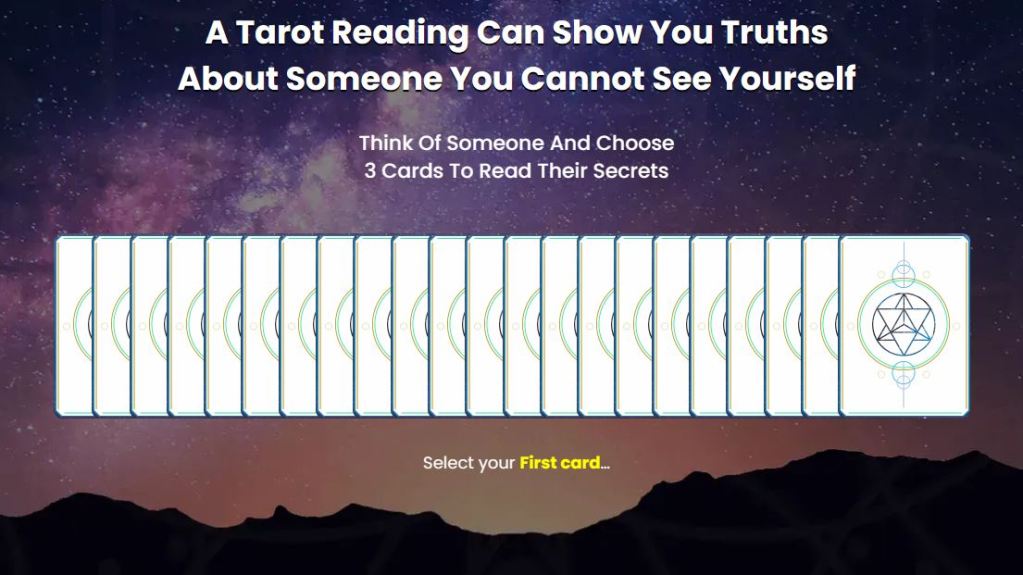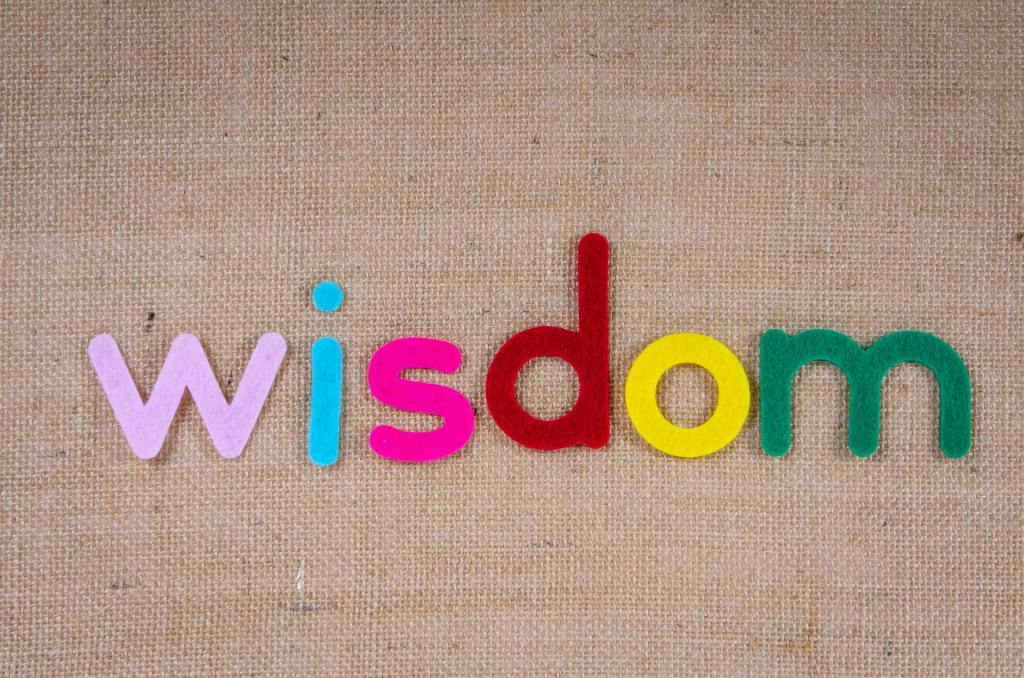Communication isn’t just about talking – it’s about truly understanding and being understood. And that’s where active listening takes center stage. Think of it as the Jedi mind trick of communication; it involves more than just hearing words, it’s about diving deep into the currents of conversation. Here’s your all-access pass to becoming a maestro of active listening:

Tune In with Intention
Before you even utter a word, the foundation of effective communication is already being laid. It starts with setting a deliberate intention to engage in active listening. Think of this intention as the compass that guides your interaction, steering it toward genuine understanding and connection. But how do you set this intention? It’s as simple as flipping the switch in your mind and gearing up for a mindful experience.
Imagine your mind as a bustling room cluttered with various thoughts – a mental whiteboard filled with scribbles from your day-to-day activities. Before stepping into a conversation, give that whiteboard a quick wipe. Erase the to-do lists, the worries, and the mental clutter that usually occupies your headspace. This mental decluttering allows you to create a fresh, receptive canvas for the incoming conversation.
As you approach the conversation, curiosity becomes your most valuable ally. Picture yourself as a detective or explorer, embarking on a quest to uncover the nuances of what the other person is saying. Just as an explorer observes their surroundings with wide-eyed wonder, approach the conversation with an open mind and a thirst for discovery. Curiosity nudges you to dig deeper, to ask questions, and to fully immerse yourself in the unfolding dialogue.
Now, imagine your brain as a giant antenna – a powerful tool for picking up even the faintest signals. Like a radio receiver tuning into different frequencies, your brain tunes into the speaker’s words, tone, and emotions. This antenna doesn’t discriminate; it’s poised to catch every detail, every nuance, and every unspoken sentiment. With your intention set and your mental whiteboard clear, your antenna is primed to pick up the rich tapestry of the conversation.
This mental setup transforms the act of listening from passive to proactive. It turns you into an engaged participant rather than a passive recipient of words. And just like a radio station that fine-tunes its frequency for optimal reception, you’re fine-tuning your mental antenna for optimal understanding.
As you step into the conversation, remember that your intention to listen actively isn’t just a prelude – it’s the stage upon which effective communication flourishes. By approaching the interaction with curiosity and a receptive mind, you’re setting the scene for a genuine exchange of thoughts, emotions, and ideas. Your intention to listen actively becomes the key that unlocks doors to deeper connections and richer conversations.

Be Present, Not Preoccupied
In the bustling landscape of our lives, conversations often become one more thing on our mental to-do list – another checkbox to tick amidst a flurry of responsibilities. But the magic of meaningful communication lies in your ability to fully immerse yourself in the present moment. It’s about stepping into the conversation with both feet, leaving the weight of your worries and tasks at the door.
Think of your mental to-do list as a collection of phantom voices, each vying for your attention. But as you stand on the threshold of a conversation, it’s time to quiet those voices. Imagine yourself shedding your mental baggage like a traveler leaving their heavy backpack behind. The worries, the tasks, the buzzing thoughts – let them linger outside the door as you enter the realm of the present.
Embracing the present moment doesn’t mean erasing your concerns or responsibilities from existence; it means granting yourself permission to temporarily set them aside. This isn’t about avoidance; it’s about carving out a sacred space where the conversation takes center stage. As you focus solely on the person in front of you and the words being exchanged, you’re weaving a cocoon of attention that shields you from the distractions of the world.
When you’re mentally present, your responses become genuine reflections of your thoughts and emotions. Have you ever had a conversation where you found yourself half-listening while your mind was preoccupied with other matters? The result is often a half-hearted response that lacks authenticity. But when you’re fully present, your words are a true representation of your thoughts, devoid of distractions or half-formed notions.
Imagine your mind as a canvas, and your presence in the conversation as the brush that paints it. When you’re fully present, your responses become bold strokes of color, adding depth and texture to the dialogue. Your genuine reactions reflect the emotions and ideas that arise in the moment, rather than regurgitating preconceived responses.
But perhaps the most enchanting result of being mentally present is the depth of connection it fosters. When you’re wholly engaged in the conversation, the other person feels seen, heard, and valued. Your focus becomes a gift – an offering that amplifies their significance in that shared moment. The connection deepens because you’re not just exchanging words; you’re exchanging presence, understanding, and empathy.
As you step into the conversation fully present, remember that this isn’t just about being physically there; it’s about being mentally invested. It’s about the power of now – the magic that happens when you suspend the cacophony of your mental to-do list and surrender to the dance of dialogue. When you’re mentally present, you’re not just a participant in the conversation; you’re a creator of connection, a weaver of moments, and a sculptor of genuine interactions.

Make Eye Contact (but Not Stalker-Level)
In the grand tapestry of communication, eye contact is the unspoken language that weaves connections. It’s like a virtual handshake that transcends words, affirming, “Hey, I’m here with you.” Just as a handshake establishes trust and rapport, maintaining eye contact signals your presence and engagement in the conversation. But like any skill, there’s an art to mastering this non-verbal dance, and finding the right balance is key.
Imagine eye contact as the gentle embrace of two minds meeting. As you lock eyes with someone, you’re forging a connection that bypasses the need for words. It’s a silent declaration that you’re not merely a passive observer – you’re a willing participant in the exchange of thoughts and emotions. This connection becomes the bridge over which understanding flows, creating a harmonious link between two individuals.
Yet, just as a handshake can turn awkward if it lingers too long, eye contact should be a harmonious dance rather than an unyielding stare. Imagine your gaze as a conversation of its own, ebbing and flowing with the ebb and flow of the dialogue. It’s about holding the connection without veering into the territory of intensity or unease.
When you maintain eye contact, you’re not seeking dominance or a power play; you’re offering a gesture of respect. It’s a way of saying, “I value what you’re saying, and I’m here to listen.” This silent agreement sets the tone for an authentic and meaningful interaction, where both parties feel acknowledged and understood.
Just as a bridge connects two places, eye contact connects two minds. It’s a passage for emotions, thoughts, and intentions to flow freely. But like a well-constructed bridge, maintaining eye contact should be effortless and natural. It’s about a genuine exchange, not a staring contest that leaves either party feeling uncomfortable.
Remember, the goal of maintaining eye contact isn’t to intimidate or overwhelm; it’s to create a space of connection and shared understanding. When you master the art of this non-verbal conversation, you’re not just meeting someone’s gaze – you’re opening a door to deeper communication. So, the next time you engage in a conversation, let your eyes become the conduit of connection. Allow your gaze to speak volumes, affirming that you’re present, engaged, and ready to journey together through the landscape of words and emotions.

Empower with Encouraging Cues
In the realm of effective communication, words are the stars, and your non-verbal cues are the supporting cast that amplifies their impact. Imagine your verbal cues as the conductor’s baton, orchestrating the symphony of conversation. They’re the subtle signals that whisper, “I’m right here with you,” transforming your exchange into a harmonious duet. Here’s how you can wield these cues like a master conductor, leading the conversation with finesse.
1. The Orchestra of Verbal Cues
Picture your verbal cues as the musical notes that guide the conversation’s rhythm. Phrases like “I see,” “tell me more,” and “go on” are the gentle prods that beckon the speaker to share deeper layers of their thoughts. These cues act as a warm invitation, signaling your active involvement and curiosity. Just as a conductor’s baton guides musicians through different movements, your verbal cues guide the conversation through its various beats.
2. Nodding: The Symphony of Agreement
Nodding your head isn’t just a reflex; it’s a silent agreement with the speaker’s words. It’s like saying, “I’m on the same page, and I’m with you.” This nod becomes the metronome that synchronizes your connection, validating the speaker’s thoughts and creating a sense of camaraderie. Imagine your nods as the subtle taps of a conductor’s baton, keeping the conversation’s tempo in harmony.
3. Mirroring: The Dance of Understanding
Mirroring facial expressions is like mirroring the melody of a musical piece. When you match the speaker’s expressions – whether they’re excited, thoughtful, or animated – you’re telling them that you’re emotionally attuned. It’s a dance of empathy that goes beyond words, showcasing your ability to resonate with their sentiments. Just as a conductor mirrors the intensity of a musical piece, your mirroring reflects your emotional engagement.

4. The Power of Silence
In the orchestra of communication, silence is a powerful instrument. Sometimes, the best response is no response – it’s a moment of reflection that echoes like a poignant pause in a musical composition. Your attentive silence says, “I’m absorbing what you’re saying, and I respect its significance.” Like a conductor’s pause before the crescendo, your silence adds weight and depth to the conversation.
5. Embrace the Crescendo of Enthusiasm
Expressing enthusiasm is like raising the volume in a crescendo. Let your voice rise naturally when the conversation hits an exciting note. Whether it’s a shared interest, a remarkable insight, or a heartfelt story, letting your excitement seep into your tone adds an extra layer of connection. Just as a conductor’s enthusiasm fuels the orchestra’s energy, your excitement fuels the conversational momentum.
6. The Grand Finale of Validation
As the conversation concludes, offer a verbal bow that validates the speaker’s contribution. Phrases like “Thank you for sharing” or “I appreciate your insights” are the final chords that linger in the air, leaving a harmonious echo of connection.
In the grand symphony of communication, your verbal cues and non-verbal gestures become the instruments that elevate the conversation to a beautiful crescendo. Like a skilled conductor, you guide the dialogue through its highs and lows, ensuring that every note is heard and every sentiment understood. So, take the baton of verbal cues, and lead your conversations with the grace of a master conductor, creating a melody of understanding and connection that resonates long after the last word is spoken.

Avoid the Interrogation Vibe
Imagine a conversation as a journey through unexplored terrain, with questions serving as the stepping stones that guide your way. Like a skilled explorer, you wield these questions strategically, unveiling hidden treasures and inviting your fellow traveler to share their unique perspective. However, while questions are the compass that keeps the conversation on track, this isn’t a high-stakes courtroom drama where rapid-fire interrogation reigns supreme. Instead, envision your questions as gentle nudges that facilitate discovery and understanding.
1. The Art of Question Placement
Think of your questions as delicate brushstrokes on the canvas of conversation. Just as an artist doesn’t inundate their canvas with color, you don’t want to overwhelm the dialogue with an onslaught of questions. Instead, sprinkle your queries throughout the exchange like stars in a night sky, guiding the conversation’s trajectory while leaving ample room for exploration.
2. Flowing Like a River
A conversation should flow like a meandering river, not a staccato drumbeat. Allow your questions to emerge naturally, seamlessly integrating them into the dialogue’s ebb and flow. This rhythmic approach maintains the conversational harmony, preventing it from feeling like an abrupt Q&A session.
3. Depth over Quantity
In the pursuit of meaningful exchange, quality trumps quantity. Instead of aiming for a barrage of questions, focus on crafting queries that encourage thoughtful responses. Imagine your questions as keys that unlock hidden chambers of insight, inviting the speaker to dive deeper into their thoughts and feelings.
4. Embrace the Pregnant Pause
After posing a question, embrace the beauty of the pregnant pause – that moment of anticipation that hangs in the air like a suspended note in a melody. Don’t rush to fill the silence; allow the speaker space to collect their thoughts and respond with clarity. Just as a musician lets a note linger before the next, you let your question resonate before moving forward.
5. Transitioning Seamlessly
Seamless transitions are the secret sauce of engaging conversation. Instead of abruptly shifting from question to question, allow the dialogue to organically segue from one point to another. Picture your questions as bridges that gracefully connect different landscapes, maintaining the flow and rhythm of the interaction.
6. Listen to the Unsaid
Just as a musician listens to the spaces between notes, a skilled conversationalist listens to the unsaid – the pauses, the hesitations, and the emotions beneath the words. These cues guide you in crafting questions that unearth the unspoken layers, creating a richer, more insightful dialogue.
Imagine your questions as lanterns that illuminate the path of conversation. As you navigate this conversational journey, remember that your role is that of a guide, not an interrogator. By embracing the art of balanced questioning, you’re fostering a dialogue that’s characterized by depth, understanding, and genuine connection. So, pepper your questions like sprinklings of stardust, allowing the conversation to sparkle with discovery and shared insights.

Don’t Jump the Gun
In the realm of effective communication, there’s a subtle dance that occurs between speaking and listening. It’s a rhythm where one partner steps forward while the other gracefully retreats, creating a harmonious flow of exchange. Imagine yourself as a dancer in this intricate waltz, navigating each step with precision and grace. One of the most crucial moves in this dance is resisting the urge to formulate your response while the other person is speaking.
Picture this: as your conversational partner speaks, their words are like drops of rain falling on the soil of your mind. Each word carries a unique essence, a distinct flavor that needs time to seep in and be absorbed. But often, our instinct is to shield ourselves with an umbrella of preconceived responses – we’re already concocting our verbal counter before the raindrops have even landed.
Resisting this urge is like letting the raindrops linger, allowing them to penetrate the soil and nourish the seeds of understanding. Just as a chef lets a marinade work its magic on meat, you let the speaker’s words marinate in your mind, infusing their essence into your understanding.
When you suppress the urge to craft your response prematurely, you’re sending a powerful message – a message that says, “I value what you’re saying, and I’m genuinely listening.” Your silence becomes a canvas for their thoughts, allowing their words to take center stage without interruption or premature judgement.
This practice of holding back isn’t about neglecting your thoughts or diminishing your voice; it’s about giving the speaker the gift of your full presence. It’s a respectful pause, a moment of mindfulness that fosters a deeper connection. It’s in this silence that you’re truly hearing, not just with your ears, but with your heart and mind.
As you let their words marinate, you’re opening the door to understanding. You’re allowing their perspective to take root within you, influencing the way you shape your response. This isn’t about crafting a rehearsed retort; it’s about co-creating a dialogue that’s informed, empathetic, and deeply connected.
So, the next time you’re engaged in a conversation, let your words hang in the air like dewdrops on a leaf, absorbing the richness of the moment. Be present, be patient, and let your responses be guided by the organic flow of the interaction. Just as a skilled dancer follows the lead of their partner, let your responses be a natural extension of the beautiful conversational dance you’re co-creating.

Reflect and Summarize
In the realm of effective communication, the act of speaking isn’t a solitary endeavor; it’s a dance of shared understanding. Picture yourself as a partner in this rhythmic exchange, moving in harmony with the speaker’s thoughts and emotions. Amidst this dance, the art of periodically pausing to reflect back what you’ve heard becomes a graceful step that not only reassures the speaker but also nurtures the conversation’s depth.
Imagine these reflections as stepping stones across a flowing river of dialogue. Just as these stones offer a stable path, your reflective statements offer a stable ground for the speaker’s thoughts to land. When you pause to mirror their words, you’re saying, “I’m right here with you, embracing every nuance you’re sharing.”
These reflections are more than mere repetition; they’re your way of affirming, “I’m not just hearing your words; I’m internalizing your message.” This validation sends a ripple of connection through the conversation, creating a sense of trust and rapport. It’s like a gentle nod of agreement, showing that you’re aligned with their narrative.
Moreover, these pauses of reflection are a gift of space – a space where the speaker can elaborate, clarify, or even reframe their thoughts. Just as an artist steps back from their canvas to assess their work, these reflective pauses give the speaker a moment to gauge the impact of their words and make adjustments if needed. It’s an invitation for them to further shape their message, resulting in a more profound exchange.
Imagine a speaker sharing their thoughts like a weaver unfurling threads of a story. Your reflective pauses are the occasional knots that hold those threads together, ensuring a coherent and beautiful tapestry of understanding. These pauses don’t interrupt the flow; they enhance it, adding a rhythm that keeps the conversation’s momentum steady.
In this dance of reflection, you’re not just an audience; you’re an engaged participant, an active listener who’s committed to unraveling the layers of the speaker’s perspective. Your reflective moments are a mirror that reflects not just their words, but the emotions, the unspoken implications, and the unsung nuances.
So, when you pause to reflect back what you’ve heard, you’re adding a layer of dimension to the conversation. You’re saying, “I’m not merely a listener; I’m a co-pilot on this journey, committed to understanding and sharing in your experience.” With each reflective statement, you’re creating a bridge of connection, inviting the speaker to venture deeper into the realm of shared understanding.

Park Your Prejudices
In the intricate tapestry of human interaction, our minds are both artists and observers, shaping and interpreting the world around us. Just as a painter applies layers of colors to a canvas, our perceptions are shaped by filters – lenses that are tinted by our experiences, beliefs, and preconceptions. Amidst this intricate dance, the practice of setting aside judgments and biases becomes a transformative step that unveils new dimensions of understanding and connection.
Imagine these filters as stained glass windows, casting colorful hues on the world. As you enter a conversation, it’s as if you’re stepping into a cathedral of thoughts, where the light of understanding passes through these windows. The art lies in recognizing when these hues distort your perception and embracing the practice of setting them aside.
This practice is akin to removing tinted glasses and seeing the world anew. It’s an acknowledgment that your judgments and biases are not universal truths but personalized interpretations. By setting them aside, you’re unveiling a clearer, unfiltered view of the conversation. It’s like wiping a fogged mirror to reveal a truer reflection.
Approaching the conversation with an open mind is like opening a window to let in fresh air. It’s about inviting the unknown, the unexpected, and the unfamiliar to join the dialogue. When you set aside judgments and biases, you’re not just making room for the speaker’s words; you’re making room for their perspective, their experiences, and their truth.
Envision these judgments and biases as mental barriers that you dismantle one by one. It’s like clearing a path through a dense forest, allowing you to navigate the conversation with clarity and authenticity. This practice doesn’t mean abandoning your beliefs; it means holding them lightly, allowing space for alternative viewpoints to coexist.
Moreover, setting aside judgments and biases is an act of humility – a recognition that your perspective is one among many. It’s like entering a vast library of thoughts, eager to explore its diverse collection of narratives. As you engage in the conversation with an open mind, you’re flipping through pages, reading between the lines, and discovering the nuances that paint a richer picture.
In the realm of connection, this practice is a bridge that spans across differences. It’s an invitation for both speaker and listener to meet in the middle, embracing the shared space of understanding. By setting aside judgments, you’re fostering a safe haven for ideas to flourish and viewpoints to be exchanged without fear of condemnation.
So, the next time you engage in a conversation, imagine yourself as an artist who’s wiping clean the canvas of perception. Set aside your colored filters, your tinted glasses, and approach the interaction with an open mind – a mind that’s receptive, curious, and eager to paint a mosaic of understanding with the colors of diverse perspectives.
Silences aren’t awkward – they’re space for ideas to settle and thoughts to emerge. Use pauses to give the speaker room to breathe and to allow you time to digest what’s being said.

Be Curious, Not Cautious
In the intricate realm of conversation, questions act as keys that unlock doors to unexplored territories. Just as an adventurer sets out to discover hidden treasures, you embark on a journey of understanding with your questions as your compass. Among these, open-ended questions stand out like beacons, casting a wide net that captures not just facts but the essence of experience. They are the bridge that leads from the shallows to the depths, from mere information to profound insights.
Imagine open-ended questions as gateways to vibrant landscapes. When you pose these questions, you’re inviting the speaker to step beyond the surface and delve into the heart of their thoughts and emotions. It’s like embarking on a voyage of discovery, where each answer is a gem waiting to be unearthed.
The art of crafting open-ended questions requires finesse, much like a potter shaping clay on a wheel. Instead of steering the conversation towards a predetermined outcome, you’re sculpting an avenue for exploration. These questions begin with words like “what,” “how,” and “why,” acting as invitations for the speaker to share their experiences, perspectives, and feelings.
The comparison between closed and open-ended questions is akin to glancing at a postcard versus diving into a novel. Imagine asking, “Did you enjoy the concert?” It’s a closed question that’s met with a binary answer: yes or no. Now consider asking, “What was the most memorable part of the concert for you?” This open-ended question invites the speaker to unravel a tapestry of thoughts – the music that touched their soul, the camaraderie of the crowd, the emotions that surged as the lights dimmed.
Open-ended questions are your toolkit for sparking curiosity. They’re the key that unlocks the door to deeper layers of the conversation. As the speaker shares their thoughts, you’re not just collecting information; you’re crafting a mosaic of their experience, layer by layer.
Moreover, these questions aren’t just a tool; they’re a gesture of respect. By asking open-ended questions, you’re acknowledging the richness of the speaker’s narrative. You’re saying, “Your thoughts matter, and I’m eager to explore them with you.”
In the grand tapestry of conversation, open-ended questions are the threads that weave connections. They’re the lanterns that light the path to mutual understanding. Each question is like a brushstroke on a canvas, adding depth, color, and texture to the dialogue.
So, the next time you’re engaged in a conversation, channel your inner explorer. Craft open-ended questions that beckon the speaker to venture into the terrain of their experiences. With curiosity as your compass and open-ended questions as your guide, you’re embarking on a journey that leads to the heart of connection and mutual discovery.

Crafting Connections through Active Listening
In the intricate tapestry of human interaction, the threads that bind us are woven with intention, curiosity, and the willingness to truly listen. The art of active listening is more than a skill; it’s a profound transformation of conversations from the mundane to the meaningful, from the surface to the soul. As you embark on this journey, armed with intention and an open heart, you’re not just participating in a dialogue – you’re crafting a connection that transcends words.
The Power of Connection
In a world that often values the loudest voice, the art of active listening stands as a testament to the strength of quiet presence. It’s about leaning in, not just physically, but emotionally and mentally, to hear the unspoken currents beneath the words. By immersing yourself in this practice, you’re embarking on a voyage that’s marked by authentic engagement and genuine curiosity.
The Symphony of Understanding
Imagine a conversation as a symphony, with each participant holding an instrument. Through active listening, you’re tuning into the melodic nuances of the speaker’s instrument. You’re catching the subtle shifts in tone, the crescendos of passion, and the delicate pauses of reflection. Your responses then become the harmonious notes that echo and resonate, creating a dialogue that’s akin to music – beautiful, harmonious, and moving.
Embracing Empathy
Active listening is not just about hearing words; it’s about understanding the emotions, the experiences, and the perspectives that shape those words. It’s an act of empathy, a bridge that connects hearts and minds. As you absorb the speaker’s words, you’re allowing their emotions to find resonance within you. This connection goes beyond the surface, fostering a sense of shared humanity and fostering compassion.
Transformation Through Presence
In a world of constant distractions, the gift of your presence is invaluable. By immersing yourself in active listening, you’re providing a sanctuary for the speaker’s thoughts. You’re creating a space where ideas can be explored, emotions can be expressed, and vulnerability can thrive. This presence is a transformative force that turns conversations into profound exchanges of understanding.
The Journey Ahead
So, with intention as your guide and an open heart as your compass, embrace the art of active listening. Dive into conversations with the curiosity of an explorer, eager to unveil hidden landscapes of thoughts and emotions. As you refine this skill, you’re not just engaging in conversations; you’re crafting connections that resonate long after the words are spoken. Your role transcends that of a mere listener – you’re a co-creator of understanding, empathy, and genuine human connection.
Join in the Conversation at Simply Sound Society our Social Media Platform and Forum!
Do not forget to check out all of our exciting free tools! Calculators, quizzes and downloadable checklists all for free.















